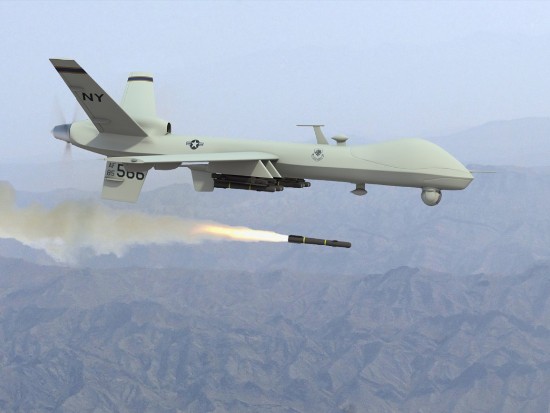EVERYTHING YOU NEED TO KNOW ABOUT DRONES—AND WRITING (I’m only exaggerating a little)
AND MY THOUGHTS ON WHERE THE REAL THREATS LIE

Mark Bowden is best known for for his book, BLACKHAWN DOWN, and the movie which followed.
His latest piece in The Atlantic (one of may favorite magazines) is a 10,000 word tour-de-force entitled The Killing Machines: How To Think About Drones. It is about as fine an example of current long-form journalism as you are likely to encounter.
Many subjects are far too complex to be explored and explained in a typical media article of 1,000 words or less – yet for years articles have been getting shorter and shorter to the great detriment of the understanding of the American public. Bowden’s remarkable piece shows what we can be done if the writer has adequate maneuvering space. In the business, we call it long-form journalism. It used to be routine, if the content justified it. Then print discovered the ‘sound bite.’
Here is a brief extract from this throwback to fine writing:
Drones collect three primary packages of data: straight visual; infrared (via a heat-sensing camera that can see through darkness and clouds); and what is called SIGINT (Signals Intelligence), gathered via electronic eavesdropping devices and other sensors. One such device is known as LIDAR (a combination of the words light and radar), which can map large areas in 3‑D. The optical sensors are so good, and the pixel array so dense, that the device can zoom in clearly on objects only inches wide from well over 15,000 feet above. With computer enhancement to eliminate distortion and counteract motion, facial-recognition software is very close to being able to pick individuals out of crowds. Operators do not even have to know exactly where to look.
“We put in the theatre [in 2011] a system called Gorgon Stare,” Lieutenant General Larry James, the Air Force’s deputy chief of staff for intelligence, surveillance, and reconnaissance, told me. “Instead of one soda-straw-size view of the world with the camera, we put essentially 10 cameras ganged together, and it gives you a very wide area of view of about four kilometers by four kilometers—about the size of the city of Fairfax, [Virginia]—that you can watch continuously. Not as much fidelity in terms of what the camera can see, but I can see movement of cars and people—those sorts of things. Now, instead of staring at a small space, which may be, like, a villa or compound, I can look at a whole city continuously for as long as I am flying that particular system.”
What really impressed me—apart from the sheer clarity of the writing—was how much better optics have become; and they are improving all the time.
I was also struck by the feeling that if we put as much effort and resources into solving our various economic and social problems, as we put into the hardware and software of war, the U.S. would be a significantly better place for its inhabitants.
The real threats we face are not emanating from terrorists, or conventional enemies, but from a corrupt political system, a deeply flawed economic system, and endemic social injustice. Our problems are structural, incredibly serious, and we are doing remarkable little to resolve them. Indeed, despite the truly extraordinary surveillance capabilities we now have at our disposal, we don’t even seem to see them.
No comments:
Post a Comment